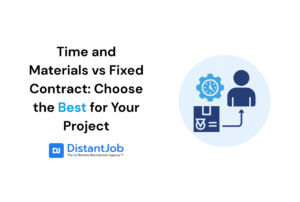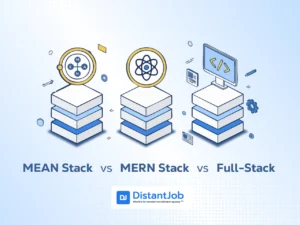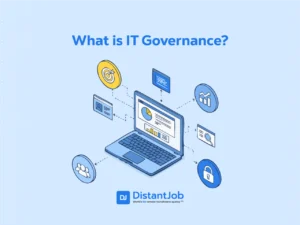Hiring well is one of the toughest challenges tech leaders face today. Studies show that a bad hire can cost a company up to 30% of that employee’s annual salary, and nearly half of new hires fail within the first 18 months. These numbers aren’t just statistics: they represent wasted time, resources, and team morale. If you’ve been through the hiring cycle more than once, you know the frustration of missing the mark and the devastating consequences.
The reality is that many hiring mistakes come from patterns that are easy to spot but hard to break. You might rush the process, overlook cultural fit, or rely too heavily on technical skills alone. In this article, we’ll walk through seven common hiring mistakes tech leaders often regret and give you clear, practical ways to avoid them. The goal is to help you scale without the usual headaches that come with hiring.
1. Rushing the Hiring Process
Hiring too quickly often leads to overlooking critical details. The average time-to-hire for tech roles in the U.S. has increased, with companies now needing more than five months to hire a tech worker (up from 4.7 months in 2023). This extended timeline reflects the complexity related to hiring competent developers and the need for thorough evaluation.
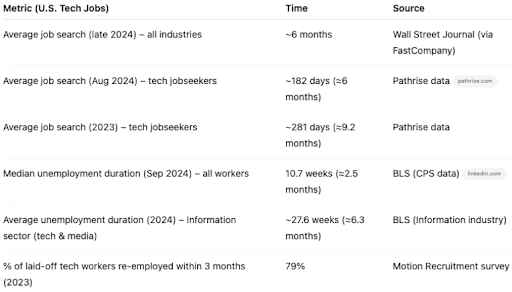
However, the urgency to fill positions can compromise the quality of hires. A rushed decision-making process can result in hiring candidates who may not align well with the company’s culture or the specific requirements of the role. The negative effects of such misalignments, while barely noticeable at first, have the very real potential of escalating in time.
To balance urgency with thoroughness, it’d be best to implement structured hiring processes. This includes clear job descriptions, standardized interview questions, and consistent evaluation criteria. The devil is in the details, and paying close attention to how an interviewee reacts throughout each of the hiring process’ steps will reveal a lot about their persona.
2. Ignoring Cultural Fit
Hiring candidates who don’t align with your company’s culture can lead to significant challenges. A study by Kristof-Brown found that employees who fit well with their company, colleagues, and management team enjoy greater job satisfaction, identify more with the firm, are more committed, and display superior job performance.
In contrast, employees who are a poor cultural fit are more likely to feel demotivated and leave the organization. Plus, a pertinent Robert Walters survey revealed that three-thirds of professionals felt demotivated when working for an organization where they were a poor cultural fit, and an equal number had left a job due to a poor cultural fit.
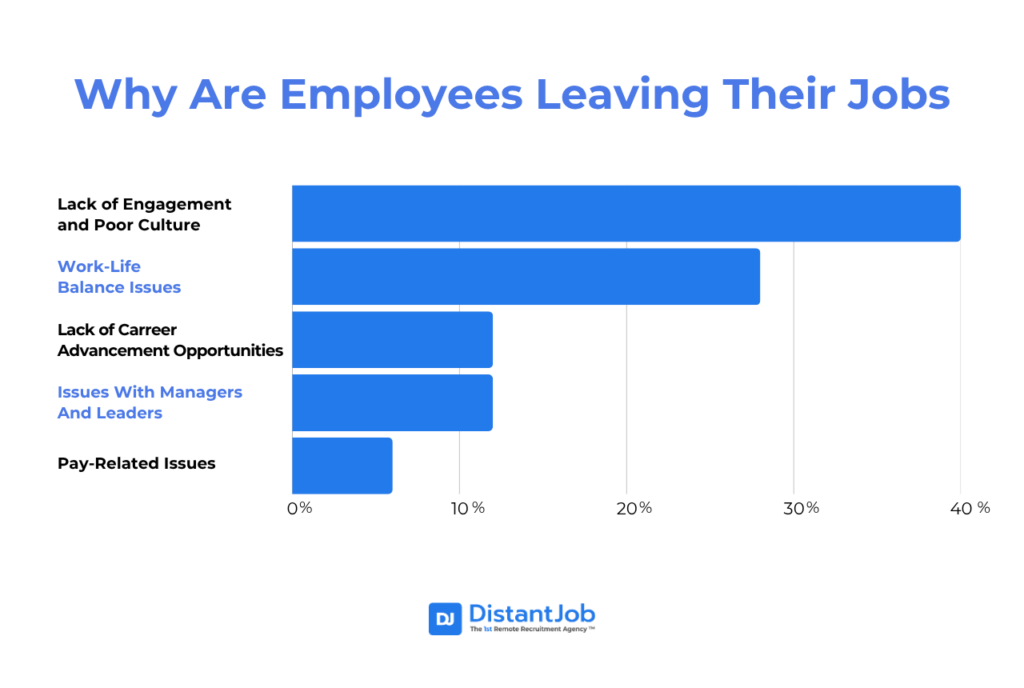
Assessing cultural fit effectively requires intentional strategies. Behavioral interviews, which focus on past experiences and behaviors, are commonly used to evaluate cultural fit. According to the Society for Human Resource Management, most HR professionals use behavioral interviews as part of their hiring process.
Additionally, situational judgment tests (SJTs) have shown promise in predicting job performance, with an accuracy rate of up to 70%, surpassing traditional interviews. Involving team members in the interview process can also provide valuable insights, with studies indicating that companies including team members in hiring have a noticeably higher retention rate.
To avoid the pitfalls of ignoring cultural fit, define your company’s culture clearly and objectively. Prepare structured interview questions that align with your core values and behaviors. Incorporate assessment tools like SJTs and personality tests to gain a proper understanding of a candidate’s compatibility.
Furthermore, to take cultural fit seriously, especially in global or remote hiring, it helps to formalize expectations across borders. That’s where using an employer of record, can make a difference. It allows you to embed your company’s values into onboarding, documentation, and compliance processes across countries. When cultural norms vary, they can help reinforce consistency in communication style, work pace, and keep your company culture from getting lost as your team scales.
3. Overvaluing Technical Skills Alone
While technical expertise is essential in tech roles, it’s not the sole determinant of success. A study by Leadership IQ revealed that the vast majority of new hire failures within the first 18 months were due to attitude and soft skills, not a lack of technical knowledge. This further proves the importance of evaluating candidates holistically, considering both their technical abilities and interpersonal skills.
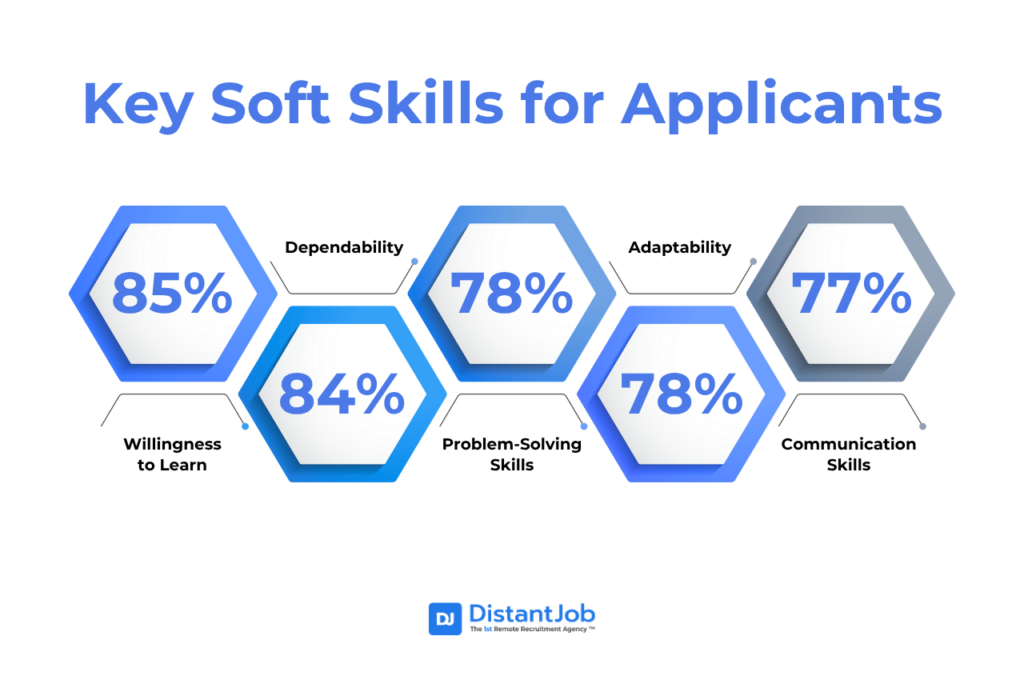
Employers are increasingly recognizing the value of soft skills in the tech industry. Pertinent surveys have found that almost all HR managers actively seek out tech talent with strong soft skills, and most have withheld job offers due to a lack of these skills. Soft skills such as communication, teamwork, and adaptability are crucial for collaboration and problem-solving in tech environments.
To assess soft skills effectively, potential employers turn to structured evaluation methods. For instance, aptitude and personality tests are (most of the time) the correct tools for objectively measuring candidates’ emotional intelligence, cognitive abilities, and cultural fit. Incorporating these assessments into the hiring process can provide a more comprehensive understanding of a candidate’s suitability for a role, ensuring a balance between technical proficiency and essential interpersonal skills.
4. Neglecting to Define Clear Job Requirements
If you start with a vague job posting, you’ll attract the wrong kind of applicants. According to a 2025 survey conducted in Ireland, most job applications get rejected because candidates don’t have the skills needed. However, more than half of the applicants said unclear expectations drove their drop-out decision even sooner. That wasted effort not only slows your pipeline but also buries promising candidates under a pile of irrelevant resumes.
When job specs don’t spell out “must-have” vs “nice-to-have criteria”, recruiters will end up burning precious time screening unsuitable resumes . And half of the postings omit clear salary ranges, benefits, or company values: key details candidates expect before applying . The result? You lose top talent before they even hit “apply” or exit early in frustration.
To fix that, collaborate across teams before writing the job posting. Choose 5–7 bullet points that clearly state required skills, responsibilities, outcomes, and compensation (note that keeping the job posting under 300 words actually boosts engagement). Similarly, use a neutral tone and inclusive language to increase applications from diverse groups. Applying such quick fixes may pave the way for candidates to “self-select” when they fit, saving you hours of screening mismatches.
5. Mismanaging Payroll Expectations
It may not be the first thing that comes to mind during hiring, but payroll is very important in long-term stability and satisfaction of your employees. Overpromising on compensation, misclassifying employment status (especially for contractors or remote workers), or lacking clarity around pay structure can all backfire – leading to attrition, legal issues, or team resentment.
To avoid these pitfalls, align hiring teams and finance early in the process. Define compensation bands, include ranges in job postings, and communicate how bonuses, equity, or benefits factor into total rewards.
For global hiring, use platforms or EOR providers like DistantJob to ensure compliance with local payroll laws. Transparent, consistent payroll practices can help you attract top talent, but most importantly give you a piece of mind when it comes to retaining the people you worked hard to hire.
6. Skipping Structured Interviews
When you rely on informal, unstructured conversations, you’re likely missing critical signals. Research shows unstructured interviews have a predictive validity of just 14%, barely better than chance, while structured formats reach validity scores of 51% or higher. Candidates often fare better not because they’re a great fit but because they connected personally with the interviewer, which creates bias and inconsistency. That kind of unreliable hiring can leave you with an engineer who chips away at team morale or a product manager whose work style clashes with yours.
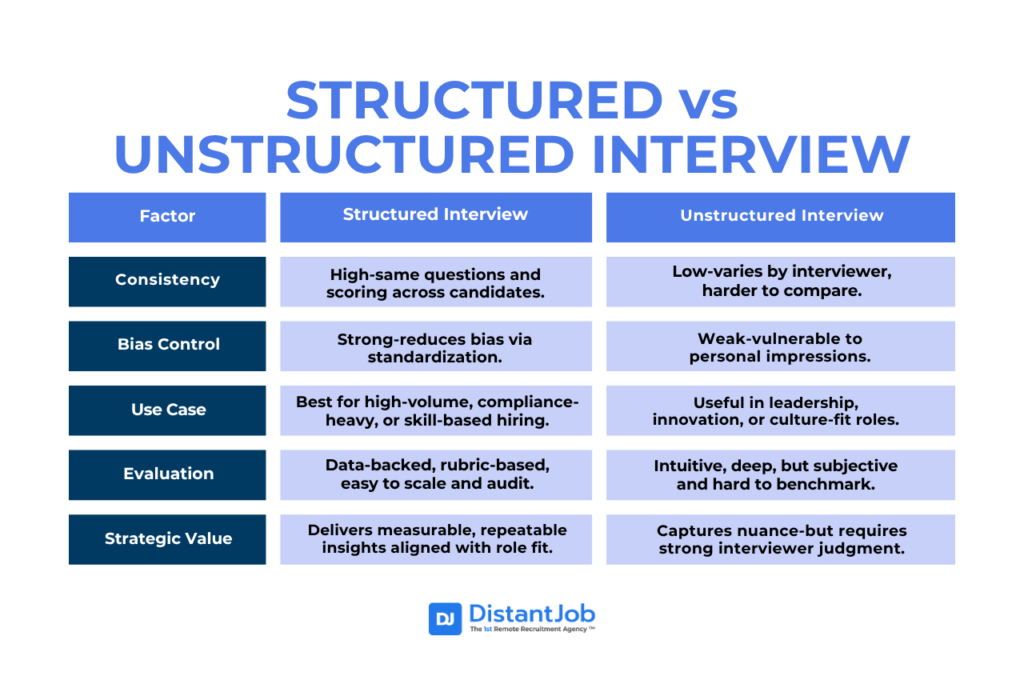
Aside from poor prediction, unstructured interviews carry bias risks. One meta-analysis saw Black and Hispanic applicants score roughly a quarter of a standard deviation below White candidates when interviews lacked structure. In contrast, structured question sets with clear scoring rubrics cut bias by around a third and improved hiring accuracy by half. These numbers aren’t negligible: they can make the difference between building a capable and diverse team or getting stuck in a loop of replacing new hires.
To set up structured interviews, start by defining the exact competencies needed for the role. Create a question bank (behavioral and situational) with standardized follow-ups and anchor scales rating each response. Train your interviewers to score answers consistently, then track results: structured interviews link directly to longer employee retention and far less time spent per interview. That way, you remove guesswork and get real data, even before you hand someone a laptop.
7. Overlooking Candidate’s Learning Ability
Learning agility, defined as a candidate’s ability to adapt, unlearn, and apply new knowledge, accounts for one-fifth of the variation in job performance. This may sound modest, but it means your chances of hiring a high performer rise just by selecting for adaptability.
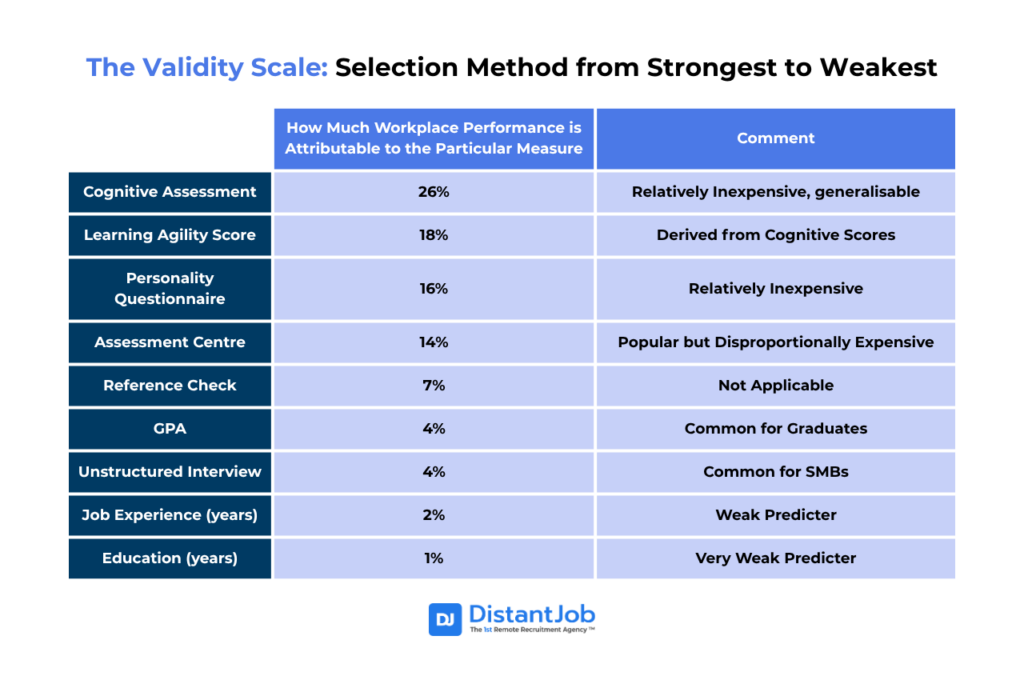
Companies that prioritize agile learners report solid returns. For example, Korn Ferry found that learning-agile employees get promoted twice as fast, and their firms enjoy profits a quarter higher than peers. On the same note, CCL research links high learning agility to more success in leadership transitions.
To evaluate learning ability, start early in the process. Use psychometric tests that measure cognitive flexibility and motivation before the interview. Such methods reveal how well candidates absorb and apply new ideas. In interviews, ask candidates to recount how they learned something brand new (be it tools, languages, or methods), and follow up with “What did you do when that didn’t work?” You can also run scenario-based exercises: give a hypothetical challenge and see if they adjust approaches on the fly (for example, explaining how they’d adopt a brand new API in production). Each step helps you hire people who grow as technology does.
8. Failing to Check References Thoroughly
Skipping reference checks comes at a cost. According to NexusCW, around 20% of employers don’t check references, and among those who do, a third uncover fake ones and change their mind about a candidate during the process. Not catching misleading or exaggerated self-reports costs you time in retesting and money in onboarding the wrong person.
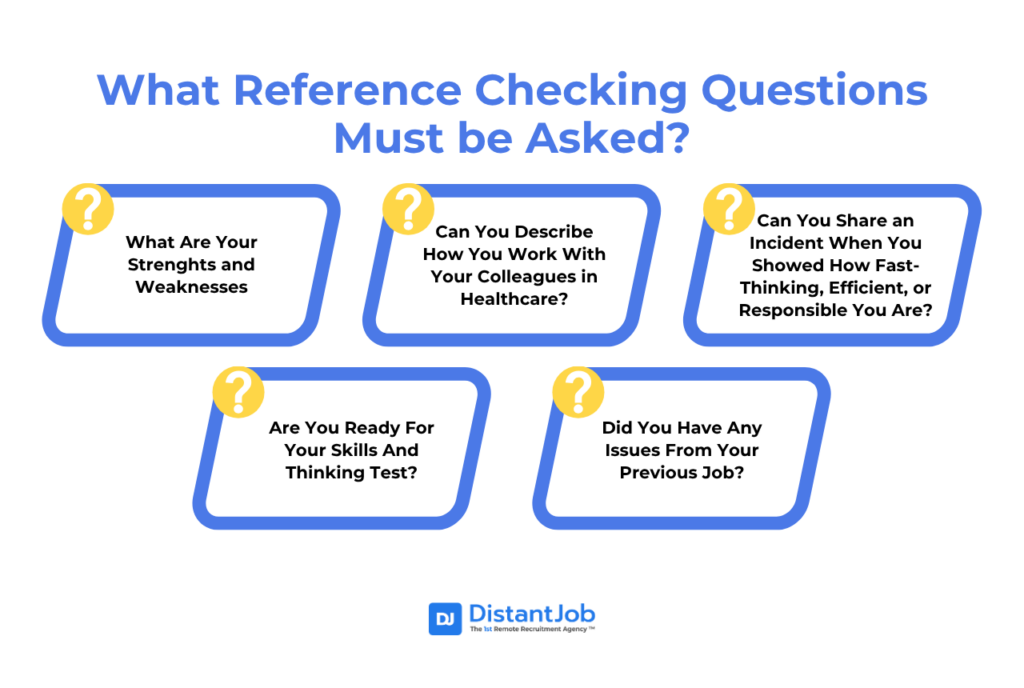
Thorough reference checks help you avoid these pitfalls. BrainWorks reports that about one-fifth of job candidates get removed from consideration purely based on feedback from references. In-depth calls with former supervisors reveal patterns in behavior and performance that interviews and resumes don’t show, alerting you to possible red flags or strengths you didn’t catch.
To make reference checking work, approach it like you would behavioral interviews. Ask candidates for contacts from the last three to four roles (preferably direct supervisors) and schedule calls before making any offer. During these calls, use focused questions: “On a scale of 1–10, how would you rate their teamwork?” and “Would you hire them again?” This turns reference checking from a bureaucratic step into a data point that informs if the candidate truly belongs on your team.
Wrap Up
Hiring mistakes can slow you down. But the real negative effect of them actually compounds over time. Misaligned hires sap productivity, unsettle your team, and eventually force you back into the hiring cycle you were trying to close. But these mistakes aren’t random. They tend to follow familiar patterns that you can spot and correct with the right processes in place.
From rushed timelines to fuzzy job specs and unchecked references, each pitfall has a fix. Build structure into your hiring steps, test for learning ability and cultural fit, and make soft skills part of your core criteria. Small adjustments in how you screen, evaluate, and decide will save you months of rework, and help you build a team that’s not only skilled, but also steady and scalable.


